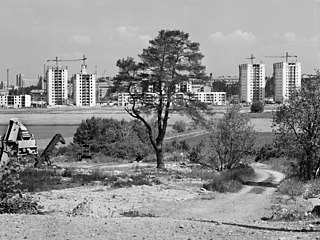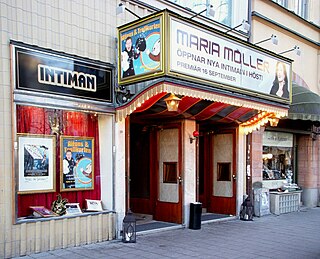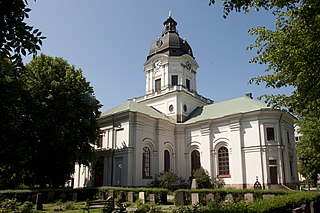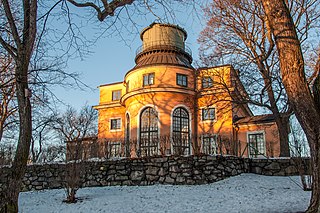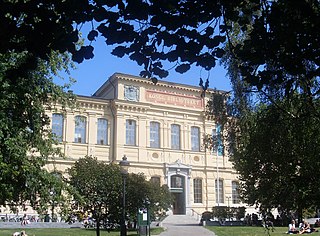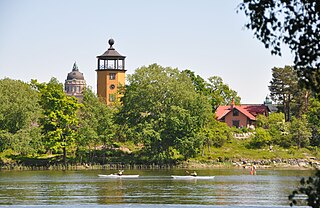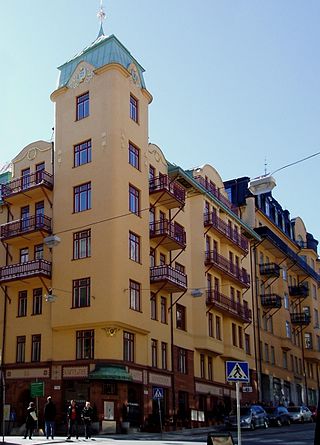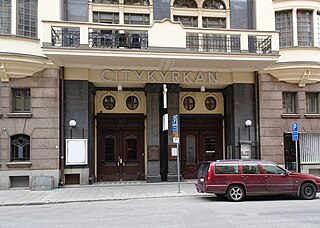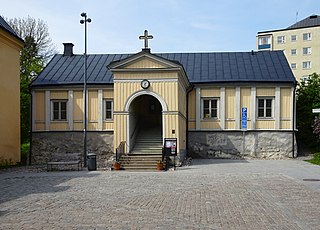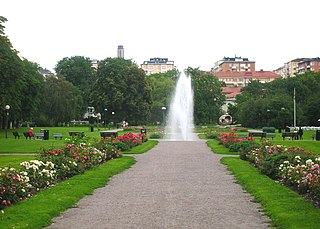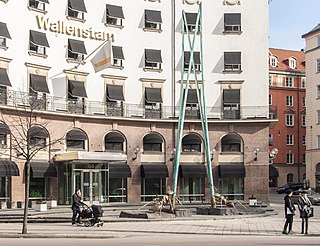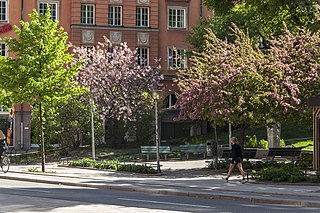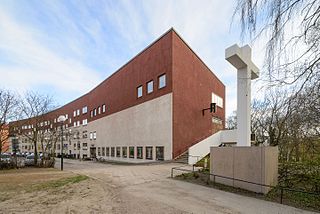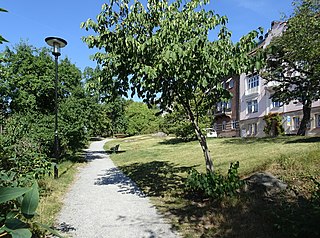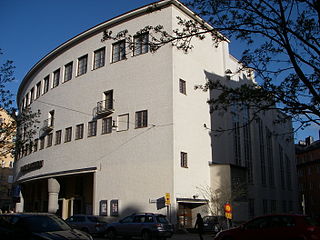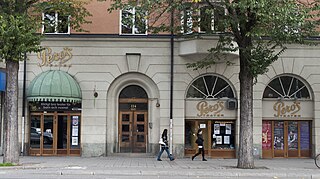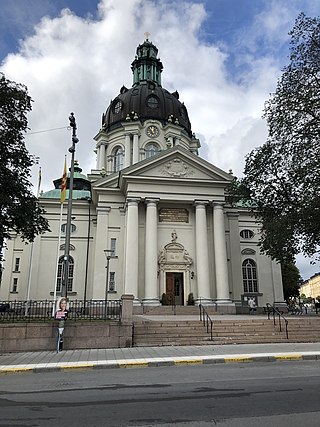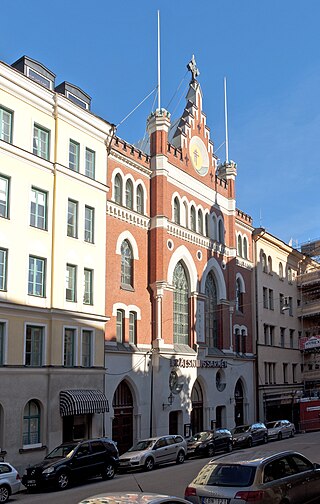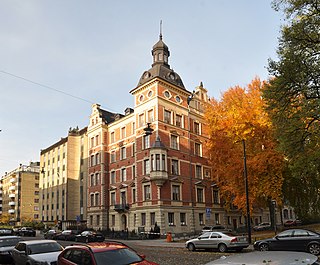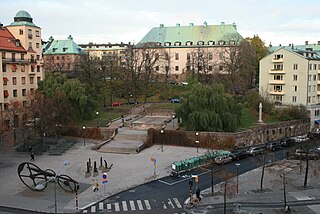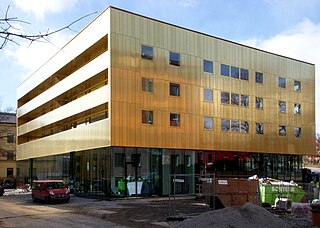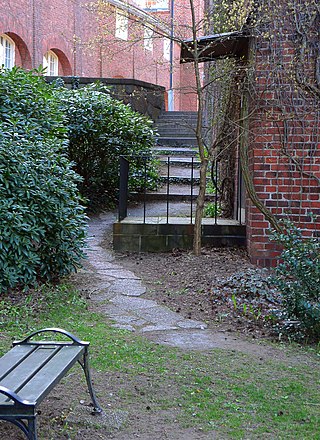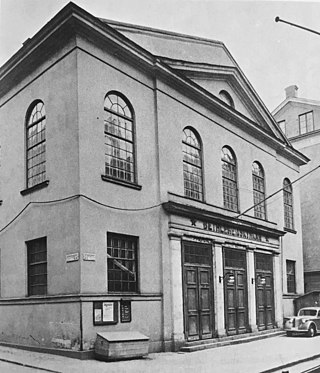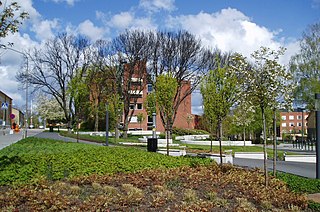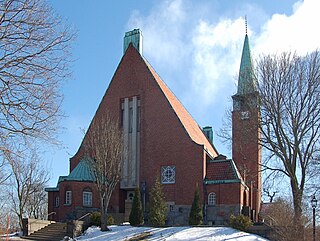36 Sights in Stockholm, Sweden (with Map and Images)
Legend
Premium Sights
Book tickets, guided tours and activities in Stockholm.
Guided Free Walking Tours
Book free guided walking tours in Stockholm.
Welcome to your journey through the most beautiful sights in Stockholm, Sweden! Whether you want to discover the city's historical treasures or experience its modern highlights, you'll find everything your heart desires here. Be inspired by our selection and plan your unforgettable adventure in Stockholm. Dive into the diversity of this fascinating city and discover everything it has to offer.
Sightseeing Tours in StockholmActivities in Stockholm1. National Library of Sweden

The National Library of Sweden is Sweden's national library. It collects and preserves all domestic printed and audio-visual materials in Swedish, as well as content with Swedish association published abroad. Being a research library, it also has major collections of literature in other languages.
Wikipedia: National Library of Sweden (EN), Website, Heritage Website
2. Årstafältet
Årstafältet, sometimes called Årsta gärde or Valla gärde, is a grassy field and a landscape park in Årsta in Söderort in Stockholm Municipality. On the field, a new district is being built with 6,000 homes for 12,000 inhabitants, which will be completely completed around 2035.
3. Intiman
Intiman, formerly Wallmans Intiman, is a private theatre located at Odenplan in Stockholm. The theatre was opened in 1950 by Lorens Marmstedt and Alf Jörgensen and was taken over in 1966 by Sandrews. In 1997, Hasse Wallman became the theatre director of Intiman, and the theatre was named Wallmans Intiman. In 2010, the Wallmans Group was bought by 2Entertain, which reintroduced the original name.
4. Adolf Fredrik Church
Adolf Fredrik Church is a church in central Stockholm, Sweden, named after Adolf Frederick. It was built in 1768–1774, replacing a wooden chapel from 1674, which was dedicated to Saint Olof. It was inaugurated on 27 November 1774.
Wikipedia: Adolf Fredrik Church (EN), Website, Heritage Website
5. Observatorium
The Stockholm Observatory is an astronomical observatory and institution in Stockholm, Sweden, founded in the 18th century and today part of Stockholm University. In 1931, the new Stockholm Observatory, nicknamed "Saltis", was inaugurated on the Karlsbaderberget at Saltsjöbaden, near Stockholm, and operated until 2001.
6. Norrmalmskyrkan
Norrmalmskyrkan in Vasastaden in Stockholm, with the address Norrtullsgatan 37, is the church of Norrmalm Baptist congregation. The congregation belongs to the Uniting Church. The congregation welcomes everyone, regardless of faith, to its services and other public gatherings and activities.
7. Humlegården
Humlegården is a major park in the district of Östermalm in Stockholm, Sweden. The park borders on Karlavägen in the north, Sturegatan in the east, Humlegårdsgatan in the south and Engelbrektsgatan in the west. It is the location of the Swedish Royal Library.
8. Bergianska trädgården
The Bergianska trädgården, the Bergian Garden or Hortus Bergianus, is a botanical garden located in the Frescati area on the outskirts of Stockholm, close to the Swedish Museum of Natural History and the main campus of Stockholm University. The director of the garden is known as Professor Bergianus.
9. Strindberg Museum
The Strindberg Museum is a museum in Stockholm, Sweden. It is dedicated to the writer August Strindberg (1849-1912) and located in his last dwelling. The site is in the building he nicknamed "Blå tornet" at Drottninggatan 85 on the corner of Drottninggatan and Tegnérgatan in the borough of Norrmalm in central Stockholm.
10. Citykyrkan
Citykyrkan is a Pentecostal congregation at Adolf Fredriks kyrkogata 10 in Stockholm, a few blocks from Hötorget. The congregation was founded in 1936 as Östermalms Fria Församling. It was for a time affiliated with the Philadelphia Church. The building, which the congregation purchased in 1940, is an old entertainment venue formerly known as the Phoenix Palace.
11. Stefanskyrkan
St. Stephen's Church or St. Stephen's Church is a church building in St. John's parish that is part of the Cathedral Contract of the Diocese of Stockholm. The church was built in 1904 and is located at Frejgatan 20B at the southern end of Vanadislunden in Vasastaden in central Stockholm.
12. Vanadislundens vattenreservoar
The Vanadislunden Water Reservoir or the Vanadislund Reservoir is a large water reservoir within the Vanadislunden Reservoir in the Vasastaden district of Stockholm. The Vanadislund reservoir currently (2009) has a water volume of 8,100 m³.
13. Sabbatsbergs kyrka
Sabbatsberg Church is a church building in the Grötlunken block in Vasastan in central Stockholm. It belongs to Gustav Vasa parish in the diocese of Stockholm. Sabbatsberg's church is Stockholm's oldest preserved wooden church and an important part of the Sabbatsberg area's history. The property Grötlunken 4 has been owned by AB Stadsholmen since 2010. The property has been blue-labelled by the City Museum in Stockholm, which means "that the buildings are considered to have particularly high cultural-historical values".
14. Tessinparken
Tessinparken is a park in Gärdet in Stockholm. The park is T-shaped and starts in the south at Valhallavägen and stretches to Askrikegatan in the north. It is located within the Royal National City Park.
15. Två myror
Two Ants is a sculpture group by the artist Torgny Larsson at the intersection of Birger Jarlsgatan and Rådmansgatan in Östermalm in Stockholm. The artwork is a project of the Society of Culture and Vision.
16. Karl Staaffs Park
Karl Staaff's Park is a park in Norrmalm in central Stockholm, located at the intersection of Birger Jarlsgatan and Regeringsgatan. The place where the square and Eriksbergsplan on the other side of Birger Jarlsgatan are located was previously known as Träsktorget where the pillory for public punishment was placed for a time. The small park was originally named Spårvägsparken after a replacement kiosk for tram staff located on the site and AB Stockholms Spårvägar's head office nearby. A smaller building designed by Nils Cronholm housed John A. Bergendahl's cinema Birger Jarl from 1912.
17. Olaus Petri kyrka
Olaus Petri Church is a church building in Oscar parish. It is located at Armfeltsgatan 2 in the district of Ladugårdsgärdet, Stockholm. The architect is Peter Celsing. The church was consecrated in 1959.
18. Balders Hage
Balder's Hage is a park in Lärkstaden in Östermalm in central Stockholm. The park was part of the town plan for a new residential town in the area around Lärkstaden that was presented in 1902 by the architect Per-Olof Hallman. Hallman was influenced by the Austrian architect Camillo Sitte's ideas about artistic urban planning. The buildings had to be adapted to the formations of the terrain and the scale was smaller than traditional, with quiet streets, terraces, small squares and parks. The park was named in 1925.
19. Ellen Keys Park
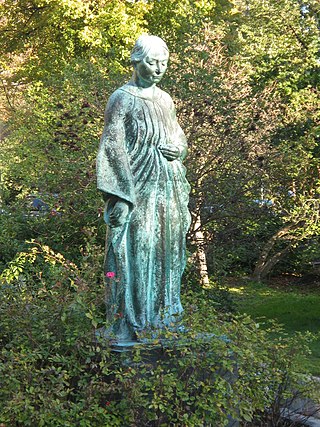
Ellen Keys Park is a park near Jarlaplan in Östermalm in central Stockholm. The park has an area of 0.5 hectares and stretches between Karlavägen and Birger Jarlsgatan and is bounded to the north by a new residential block and to the south by Borgarskolan.
20. Vanadisplan
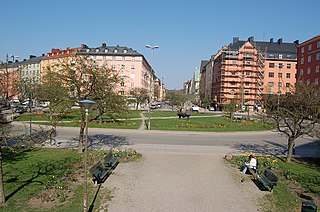
Vanadisplan is an open space in Vasastan, Stockholm's inner city. Vanadisplan passes Sankt Eriksgatan, Vanadisvägen and Hälsingegatan, among other places. From 1925 to 1967, it was the northern terminus and turning loop of the Djurgården Line.
21. Engelbrekt Church
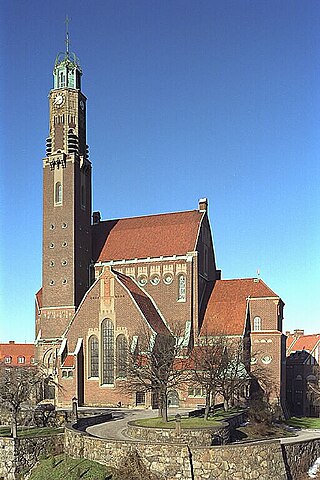
Engelbrekt Church is a protected church located in the Lärkstaden area of Stockholm, Sweden. Its located at Östermalm and belongs to the Church of Sweden and is parish church for Engelbrekt Parish in the Diocese of Stockholm. It was designed by architect Lars Israel Wahlman in the National Romantic style and completed in 1914. It is one of the largest churches in Stockholm, with 1,400 seats.
22. Sankt Eriksparken
Sankt Eriksparken was a park at Kvarteret Flygmaskin in the Vasastaden district of Stockholm, adjacent to Kvarteret Sländan. The park was located between Norra Stationsgatan to the north, Dannemoragatan to the east, Sankt Eriksgatan to the west and Upplandsgatan/Västmannagatan to the south. At Sankt Eriksparken's site there is now an extension of Rödabergsskolan.
23. Filadelfiakyrkan
Filadelfiakyrkan is a Pentecostal church building at Rörstrandsgatan 7 in Stockholm, Sweden; it was dedicated on 2 November 1930. The building is owned by the Filadelfia Stockholm congregation, the largest congregation in the Swedish Pentecostal movement with about 5,400 members as of 2015. It is also the largest Pentecostal congregation in Europe.
24. Teaterverket
Teater Pero is a theatre in Stockholm focused on children's theatre. Teater Pero was founded in 1983 by Peter Engkvist and Roger Westberg. In 1993, Teater Pero took over the premises at Sveavägen 114 that had previously been used by the venerable cinema Rialto, and which was one of Sweden's first cinemas.
25. Gustaf Vasa Church
Gustaf Vasa Church is a church located in the Vasastaden district of Stockholm, Sweden. Inaugurated in 1906 and named after 16th century King Gustav Vasa, it was designed by architect Agi Lindegren in the Baroque Revival style. Situated between two busy avenues partially lined with trees, its dome rises 60 metres (200 ft) above the nearby Odenplan plaza. The floor plan is in the shape of a Greek cross and seats 1,200 people, making it one of the largest churches in Stockholm.
26. Frälsningsarméns tempel
The Temple is the Salvation Army's first corps (congregation) at Östermalmsgatan 69, in Östermalm in Stockholm. It was built in 1886–1887 as the first union building in Sweden, for Stockholm's 1st Corps and is today the oldest union building in the world in continuous use.
27. Sveaplan
Sveaplan is a roundabout at the northern end of Sveavägen in the Vasastaden district in central Stockholm. At Sveaplan, the south-north and east-west parts of Sveavägen meet, as well as Cedersdalsgatan.
28. Stureparken
Stureparken is a small park in the borough of Östermalm in Stockholm, Sweden. The park is situated at the corner of Östermalmsgatan / Sturegatan. The park began construction in 1906. Stureparken is surrounded by several architecturally interesting buildings. Included are the residential buildings Björken 18 which was designed by architect Fredrik Dahlberg and built between 1885 and 1886 and Rosenborgshuset which was designed by Ferdinand Boberg and built between 1883 and 1884.
29. Eriksbergsparken
Eriksbergsparken is a park in Östermalm in the informal area of Eriksberg in central Stockholm. The park was established in 1920 under the city gardener Mauritz Hammarberg and is adjacent to Eriksbergsplan, formerly Träsktorget. The park is designed as a staircase up to a terrace with plantings and a fountain. Above the park, the Order of the Carpenters has its building. On the other side of Birger Jarlsgatan is Karl Staaff's park.
30. Sven-Harrys konstmuseum
Sven-Harry's Art Museum is an art museum in Stockholm, Sweden, founded by builder Sven-Harry Karlsson. It is housed in a multi-purpose building alongside an art gallery, museum shop, apartments, and businesses.
31. Sankt Matteus kyrka
St. Matthew's Church is a protected church located in the Vasastaden district of Stockholm, Sweden. Originally intended to be used as a chapel in the Adolf Fredrik Parish, it was designed by Erik Lallerstedt and built in 1901–1903, at an intersection in Vasastaden.
32. Engelska parken
The English Park on Stockholm Djurgården is one of Stockholm's most secluded parks. It is located behind the Royal Institute of Technology's largest lecture hall F1 (Alfvénsalen) on a terrace above the adjacent Lill-Jansskogen. The park is accessed from the south via a hole in the wall from Lindstedtsvägen, from the north via a terrace behind the building at Teknikringen 24, or from the west via a staircase from the open space Övre Borggården.
33. Betlehemskyrkan
Bethlehem Church is the Swedish Evangelical Mission's church in Stockholm, Sweden. The old church building was consecrated in October 1840 as Sweden's first free church building, under the name Engelska kapellet. It was located near Hötorget in Norrmalm, where the second and third Hötorget buildings are now located and was taken over by the Swedish Evangelical Mission in connection with the founding of the organization in 1856. The church was demolished in 1953 in conjunction with the redevelopment of Norrmalm. The new church was consecrated in 1956 at Luntmakargatan in Vasastan.
34. Triangelparken
Triangelparken is a park on KTH's campus on Stockholm Royal Seaport. The park is triangular in shape and is bounded by Brinellvägen to the east, Drottning Kristina's road to the southwest and the Land Surveying Department's building to the north. It is not only the shape of the park that has given it its name, but also that the triangle is a symbol of surveying. The park is crossed by a walkway that runs from Teknikringen and continues north of the Swedish Defence University on the other side of Drottning Kristinas väg. In 2013, Triangelparken was renovated under the leadership of the Tengbom Group. After the renovation, the walkway has been paved and the park has been given concrete benches shaped like an amphitheatre on the slope down to Brinellvägen. In the western corner of the park is a collection of steel tables with stainless steel house models.
35. Hjorthagens kyrka
The Hjorthagen Church is a church building at Dianavägen at Hjorthagen in Stockholm, Sweden. It belongs to the Engelbrekt Parish of the Church of Sweden. Construction began in 1907 and the church was inaugurated on 25 March 1909 by archbishop Johan August Ekman.
36. Carl Eldh Studio Museum
Carl Eldh's Studio Museum is an artist's museum at Lögebodavägen 10 in Bellevue Park in Vasastaden in Stockholm. The museum was the studio of the sculptor Carl Eldh. The studio is preserved as Carl Eldh once left it. The facility has been a national listed building since 2010.
Share
How likely are you to recommend us?
Disclaimer Please be aware of your surroundings and do not enter private property. We are not liable for any damages that occur during the tours.
